
When Charlotte Woodward was born, she had a genetic condition called Down syndrome. Doctors told her parents that she'd most likely never learn to read or write. All she could expect as an adult, they said, was a job in a sheltered workshop making less than minimum wage.
"My mom knew that wasn't right, so she didn't take those words to heart," Woodward, now 33, says.
"She instilled in me a love of education, and I started learning to read when I was three and a half years old."
Woodward has a degree in sociology from George Mason University in Virginia. Her studies concentrated in inequality and social change. In the past decade, she's written several articles that have appeared in medical journals and has contributed to a chapter of a book. One TikTok she made about discrimination that people with Down syndrome face has received more than three million views.
What Is Down Syndrome?
In the United States, one in every 700 babies is born with Down syndrome. It's a genetic condition caused by an extra copy of an individual's 21st chromosome. Kids with Down syndrome may be short in stature and have low muscle tone, which can affect their speech. They also possess intellectual disabilities to varying degrees. This means that it may be particularly challenging for them to learn new information and skills.
"One of the most notable differences in brain anatomy between children with Down syndrome and neurotypical children is that the former tend to have smaller brains," says Ben Spielberg. He's a neuroscientist in Los Angeles, California, and has studied the brains of kids with the condition. "Individuals with Down syndrome typically have a smaller hippocampus, which is responsible for memory and learning, as well as an impacted cerebellum, [which is] responsible for motor coordination."
How Does Down Syndrome Affect Learning?
Denne historien er fra September 2023-utgaven av Muse Science Magazine for Kids.
Start din 7-dagers gratis prøveperiode på Magzter GOLD for å få tilgang til tusenvis av utvalgte premiumhistorier og 9000+ magasiner og aviser.
Allerede abonnent ? Logg på
Denne historien er fra September 2023-utgaven av Muse Science Magazine for Kids.
Start din 7-dagers gratis prøveperiode på Magzter GOLD for å få tilgang til tusenvis av utvalgte premiumhistorier og 9000+ magasiner og aviser.
Allerede abonnent? Logg på
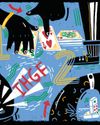
HOUSE OF CARDS
TRY THE PERFECT EXPERIMENT—AND THEN REFLECT ON HOW IT WENT.
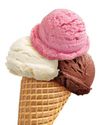
ACCIDENTALLY Delicious
Have you ever been really hungry, but there wasn't much to eat in your kitchen? Did you throw together a bunch of stuff you had on hand and were pleasantly surprised when it tasted good?

IS YOUR SOCIAL MEDIA FEED TOO PERFECT?
EVERYONE'S LIFE CAN APPEAR PERFECT ON SOCIAL MEDIA. On YouTube, Instagram, Snapchat, and similar apps, people tend to share their happiest, most picturesque moments. They carefully compose any text to get the message just right. They use filters and enhancements to glam up images and videos. The app sorts the posts with the most likes and comments to the top. The end result? All you see of others' lives is the best of the best.

Art ALERT!
THE CASE OF THE MASTERPIECE THAT WASN'T
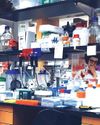
MARYAM ZARINGHALAM
SCIENCE POLICY FELLOW AND WRITER
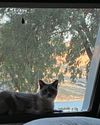
Lost Cat Treks More Than 800 Miles to Get Home
Rayne Beau (pronounced RANE-BO, as in \"rainbow\") is a two-year-old Siamese cat.
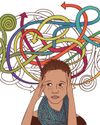
EASY AS ABC
But in number theory, well, it's complicated.

That Wanaka Tree Gets a Companion
\"THAT WANAKA TREE,\" AS IT'S CALLED, IS A FAMOUS WILLOW TREE THAT GROWS OUT OF LAKE WANAKA ON THE SOUTH ISLAND OF NEW ZEALAND.
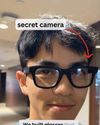
Two College Students Devise Smart Glasses That Can ID People
YOU'RE WAITING FOR THE SUBWAY WITH A COUPLE OF YOUR FRIENDS.

Two Comb Jellies Can Fuse Their Bodies Together to Become One
COMB JELLIES ARE GELATIN-LIKE AND MOSTLY SEETHROUGH INVERTEBRATES, OR ANIMALS WITHOUT A BACKBONE, THAT FLOAT IN THE OCEAN NEAR SHORE.
